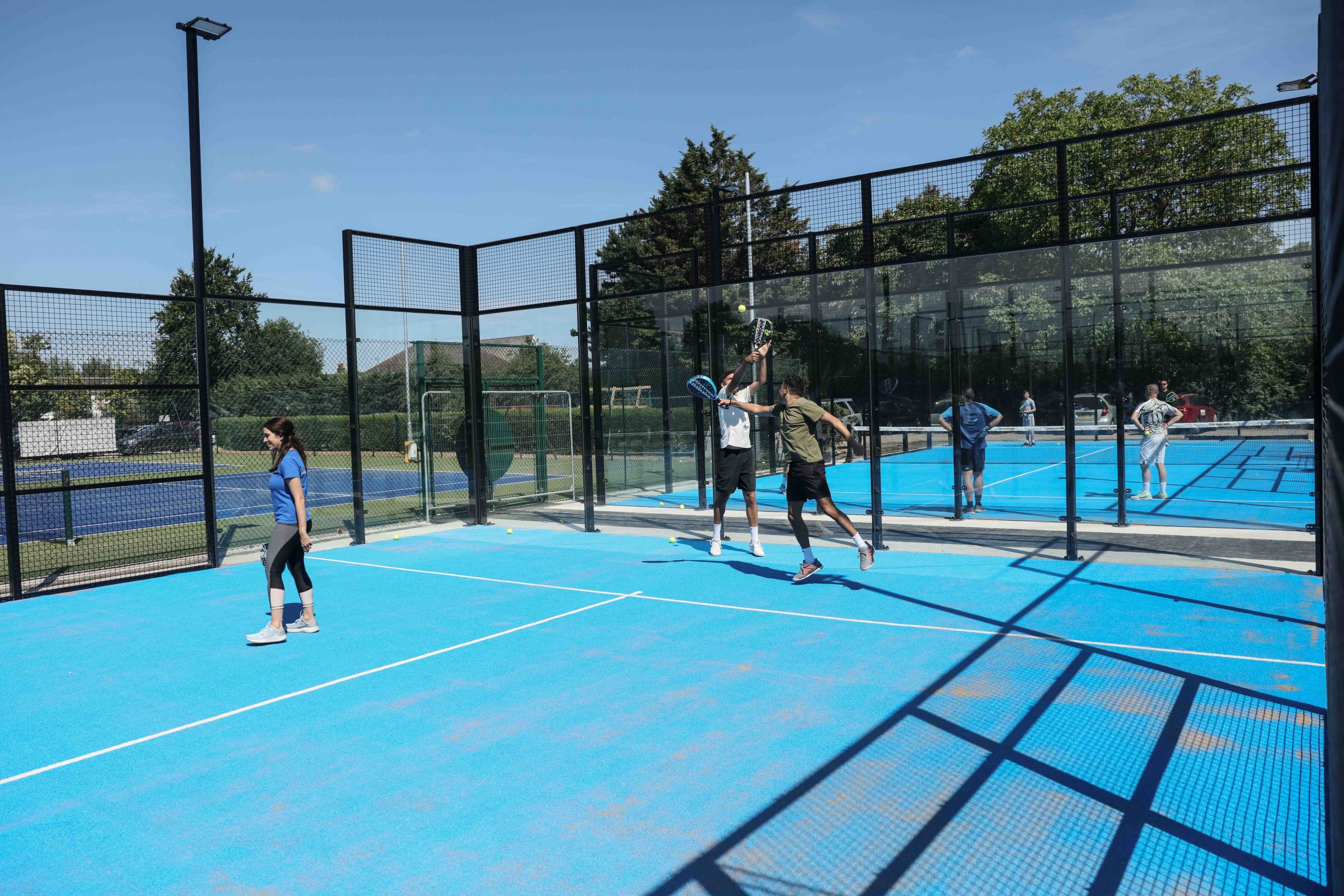What is Padel?


Padel is a cross between tennis and squash that is easy to play, fun and extremely sociable. It is played mainly in a doubles format on an enclosed court (two thirds the size of a tennis court) and can be played in groups of mixed ages and abilities, as it is not power dominant.
The rules are broadly the same as tennis with the same scoring, although you serve underhand and the walls are used as part of the game with the ball allowed to bounce off them.
One of the fastest growing sports across continental Europe, Padel has gained increasing popularity over recent years, with over six million people currently playing in Spain.
What are the benefits?
- Easy to play for all ages and abilities as the ball strike is made close to the hand and body
- Rewarding at any level, it has a rapid learning curve which has low emphasis on technical skill and power
- Smaller enclosed court means play is continuous, so you are never ‘ball collecting’
- Played as doubles it is very sociable and between four is inexpensive
- Great aerobic work out
- Padel is addictive and great fun – every time
Take a look at this video introducing Padel:
Equipment for Padel
Padel rackets are stringless with an elastic surface with holes. As with all sports, costs vary from about £60 for a starter racket with a good choice for club standard players in the £80 – £120 range. Rackets can be purchased from the Game 4 Padel Shop, and starter packages are available for Broxbourne Padel Club members (see membership page).

Rackets are available to hire from the Broxbourne Sports Club bar. If you book a court or group session, please arrive early to allow time to pick up your racket.
The balls used are low compression tennis balls. These are available to buy from the Broxbourne Sports Club bar.
Rules of Padel
In Padel, scoring is the same as tennis – but there are many differences between the sports. A Padel court has walls, so shots can be played off them, like in squash.
Also, unlike tennis, when a ball is served it must bounce once on the floor then hit from below, or at, waist height. When serving, players have two attempts to hit into an opponent’s box.
Players can also volley the ball during a rally however the ball is determined as “out” should it hit a wall directly. In Padel, players can bounce the ball off a wall on their own side of the court – similar to squash.
Like tennis, a set is won when a team wins six games and there is at least two games difference – failing that the set is decided by a tie-break. Matches are best of three sets.
Serve
-
Serve diagonally standing behind service line. Returner may stand wherever they like. Two serves as in tennis.
-
The server must first bounce the ball, then hit it below waist level. Server must keep at least one foot on the ground when hitting the serve and feet may not touch/cross the service line while serving.
-
The ball must bounce in the service box opposite before being hit by returner.
-
If it bounces in the box and hits the wire mesh fencing before crossing the service line (on the returner’s side), it’s a fault.
-
If the ball hits the net and bounces in the box it’s a let unless it touches the wire mesh fencing before the 2nd bounce.
Play
-
Ball must first bounce on the ground on the opponent’s side before hitting a wall.
-
Players may volley instead of letting it bounce (except service return).
-
Players may hit the ball after it has bounced on mesh or glass (on their side) to send it back over the net.
-
Players may hit the ball against glass (side or back wall) on their side in order to return the ball. They may not hit the ball against mesh on their side.
-
As in tennis, the ball may only bounce once on your side, and it may only be hit once.
